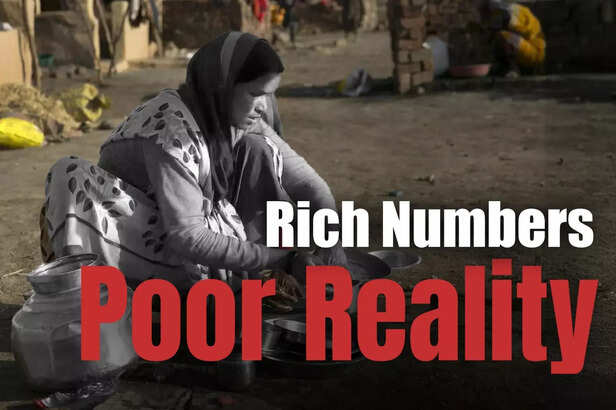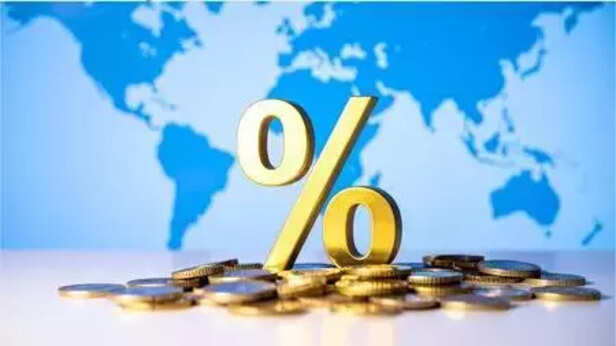Top 10% Hold 57% of India’s Wealth — This Is Not a Rich Nation
Nidhi | Jun 09, 2025, 22:48 IST
( Image credit : Times Life Bureau, Timeslife )
India is often celebrated as a rising economic powerhouse — but the numbers tell a more unsettling story. As of 2025, the richest 10% of Indians control a staggering 57% of the nation’s total wealth, while the poorest 50% own just 13%. This article dives deep into India’s widening wealth gap, uncovering the structural, political, and historical forces that have led to one of the highest inequality levels in the world. Is India truly a rich nation — or just home to rich people.
India is often hailed as an economic miracle — the world’s fastest-growing major economy, a thriving tech ecosystem, a booming stock market, and a youthful population. But for all the celebration of macroeconomic numbers, one truth is increasingly hard to ignore: India is not a rich country. It is a deeply unequal one — where only a few are permitted to be rich.
And now, thanks to data from the World Inequality Lab, Economic Survey 2023, and recent wealth distribution reports, we can say this with data — not just rhetoric. 
Let’s begin with the most disturbing gap. According to the World Inequality Lab, in 2022–23:
India’s average annual income is ₹2.35 lakh. But the average is meaningless in a country where the income pyramid is brutally skewed.
In 1961, the middle 40% held 43.7% of the nation's wealth. Today, their share has dropped to 29%.
This means the so-called “aspirational class” is not moving up — it is being pushed down, caught between rising living costs and stagnant incomes, while the top 10% consolidate everything.
India’s billionaires are not accidental geniuses. Much of their wealth is linked to public contracts, monopoly control, or proximity to the state.

Post-independence India focused on public sector growth, land reforms, and license raj policies. While it slowed wealth creation, it kept inequality in check. The top 1%’s income share hovered around 11–13%.
The 1991 reforms unleashed markets, innovation, and foreign capital. But they also deregulated without redistributing. In the absence of progressive taxation and safety nets, the rich pulled ahead at lightning speed.
Apps, digital banking, and online commerce have given rise to unicorns — but also informal work, gig jobs, and wage volatility for the masses. Wealth is now built on data, algorithms, and access — things the poor don’t have. 
70 crore Indians earn too little to consume beyond essentials. India’s economy is supply-rich, but demand-poor. Inequality is a tax on growth.
Access to good education, nutrition, and healthcare determines outcomes — not intelligence or hard work. And today, the quality of public services available to the bottom 50% is declining.
When power, wealth, and influence get concentrated in a tiny elite, democracy becomes performative. It no longer represents the many — it protects the few. 
India doesn’t need more billionaires funding schools as CSR. It needs a government that taxes them fairly and builds world-class schools as a right.
Inequality isn’t just an economic issue. It’s a civilizational test.
In the Mahabharata, the fall of the Kaurava empire begins when wealth, dignity, and power are monopolized by a few cousins, while millions suffer. History teaches us: Any society that allows concentrated privilege and mass deprivation to coexist is headed for rupture.
India is not poor because it lacks resources. It is poor because it permits inequality to flourish unchecked.
Explore the latest trends and tips in Health & Fitness, Travel, Life Hacks, Fashion & Beauty, and Relationships at Times Life!
And now, thanks to data from the World Inequality Lab, Economic Survey 2023, and recent wealth distribution reports, we can say this with data — not just rhetoric.
The Data Doesn’t Lie. But It Does Hurt.

Inequality
( Image credit : Times Life Bureau )
1. The Bottom Half Lives on ₹5,930/month. The Top 0.001% Earn ₹4.04 crore/month.
- Bottom 50% of Indians earned ₹71,163 per year (₹5,930/month)
- The top 0.001% — around 9,200 individuals — earned ₹48.5 crore/year (₹4.04 crore/month)
2. Averaging the Average Is Deceptive
- The top 1% (about 1.3 crore people) earn 22.6% of total national income.
- The bottom 50% (about 70 crore people) earn just 15%.
3. The Middle Class Is Squeezed and Shrinking
This means the so-called “aspirational class” is not moving up — it is being pushed down, caught between rising living costs and stagnant incomes, while the top 10% consolidate everything.
4. India’s Billionaires Are Booming — But Their Wealth Comes from Public Resources
- As of 2024, India has over 180 billionaires, more than Germany or the UK.
- The combined wealth of the top 1% is now equal to 40% of India’s GDP.
How Did We Get Here? A Brief History of Inequality in India

Proud moment_ Leaders hail India becoming world's 4th largest economy (1).
( Image credit : IANS )
The Socialist Years (1950s–1980s)
The Liberalization Era (1991 onwards)
- By 2000, the top 1% earned 21% of national income.
- By 2022, this rose to 22.6%, while the bottom 50%’s share shrank from 23% to 15%.
The Digital-Platform Era (2015–Present)
Why This Matters: The Hidden Costs of Unequal India

Poverty.
( Image credit : Pexels )
1. Economic Demand Is Collapsing
2. Meritocracy Is a Myth Without Equal Starting Lines
3. Democracy Weakens When Inequality Deepens
What Can Be Done? Policy, Not Charity

Global economic data
( Image credit : IANS )
India doesn’t need more billionaires funding schools as CSR. It needs a government that taxes them fairly and builds world-class schools as a right.
Possible Interventions:
- Wealth Tax: A 2% wealth tax on India’s richest 167 families could generate ₹4 lakh crore annually — enough to fund universal nutrition, better schools, and primary health centers.
- Inheritance Tax: India abolished inheritance tax in 1985. Reintroducing it, even modestly, could prevent dynastic wealth hoarding.
- Capital Gains Reform: Unearned wealth — from stocks, land, and speculation — must be taxed on par with earned income.
- Universal Basic Services: Education, nutrition, and public health should be rights, not privileges. Targeted cash transfers and food security must be strengthened.
- Land and Urban Reform: India’s richest asset is land. Urban planning, affordable housing, and rural land rights need urgent reform.
The Bigger Picture: Is This Sustainable?
In the Mahabharata, the fall of the Kaurava empire begins when wealth, dignity, and power are monopolized by a few cousins, while millions suffer. History teaches us: Any society that allows concentrated privilege and mass deprivation to coexist is headed for rupture.
India is not poor because it lacks resources. It is poor because it permits inequality to flourish unchecked.
Explore the latest trends and tips in Health & Fitness, Travel, Life Hacks, Fashion & Beauty, and Relationships at Times Life!
